Discover 20 hidden attractions, cool sights, and unusual things to do in Yekaterinburg (Russia). Don't miss out on these must-see attractions: Ekaterinburg Museum of Fine Arts, Church of All Saints, and Rastorguyev-Kharitonov Palace. Also, be sure to include Boris Yeltsin Presidential Center in your itinerary.
Below, you can find the list of the most amazing places you should visit in Yekaterinburg (Sverdlovsk).
Table of Contents
Ekaterinburg Museum of Fine Arts
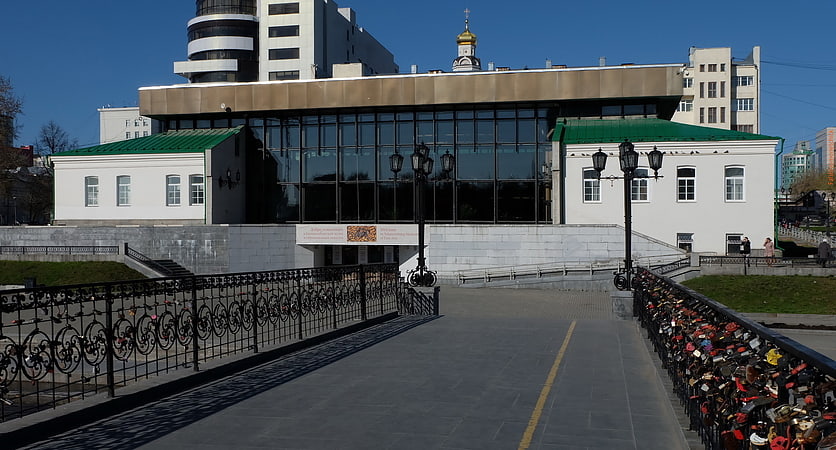
Museum in Yekaterinburg, Russia. The Yekaterinburg Museum of Fine Arts, established in 1986, is the largest art museum of the Urals region of Russia. It is based in Voevodina Street on the banks of the Iset River in the city of Yekaterinburg.
At the heart of the museum building is one of the oldest buildings in Yekaterinburg, a hospital built in 1730 for the Yekaterinburg Ironworks. The building was modified several times during the 19th century. In the 1970s, most of the buildings of the former ironworks were demolished and the Historical Square laid out in their place. At the end of the 1970s, the idea of converting the remainder into a museum space was suggested. The project was completed in 1986.[1]
Address: Voyevodina St., 5, 620014 Yekaterinburg
Church of All Saints

Also known as: Храм на Крови
Church in Yekaterinburg, Russia. The Church on Blood in Honour of All Saints Resplendent in the Russian Land is a Russian Orthodox church in Yekaterinburg. Being built on the site of the Ipatiev House where Nicholas II, the last Emperor of Russia, and his family, along with members of the household, were executed by the Bolsheviks during the Russian Civil War, the church commemorates the Romanov sainthood.[2]
Address: ul. Tolmacheva, 34, 620075 Yekaterinburg
Rastorguyev-Kharitonov Palace
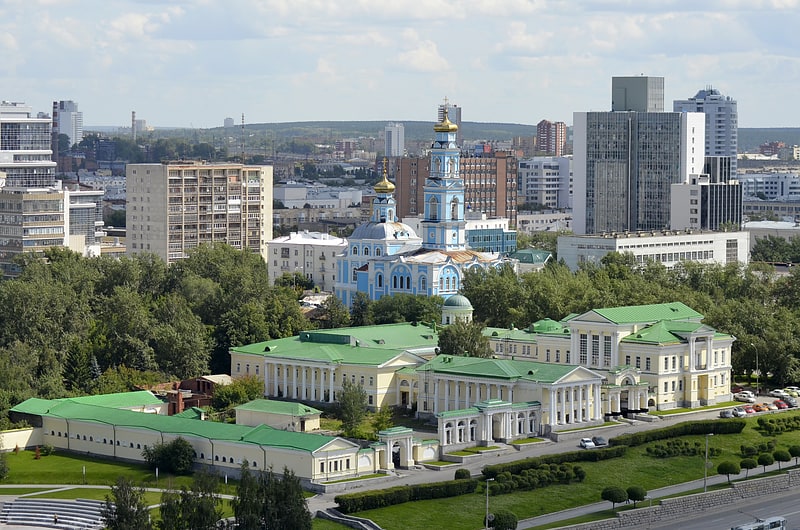
Also known as: Усадьба Расторгуевых — Харитоновых
Manor house in Yekaterinburg, Russia. The Rastorguyev–Kharitonov Palace is arguably the grandest palatial residence in the Urals. This Neoclassical townhouse was commissioned in 1794 by Lev Rastorguyev, an Old Believer merchant and landowner. The main house was built on the so-called Annunciation Hill in Yekaterinburg. The nearby Annunciation Church was built at the same time.
The palace takes its present name from Pyotr Kharitonov, Rastorguyev's son-in-law. He inherited the property in 1824 and employed architect Mikhail Pavlovich Malakhov to connect the buildings with a series of covered passageways. An English park on the grounds was also commissioned by Kharitonov. His harsh treatment of the serfs gave rise to a bevy of legends about a network of underground chambers and passages where his peasants were tortured.
In 1837 Kharitonov was officially censured for his cruelty, put on trial and condemned to life imprisonment in Kexholm Fortress. The palace fell into disuse.
It was repaired in Soviet Time in the late 1930s to house a local Pioneers Palace. After USSR and pioneers system fall, it continued to function as children's art school.
Pyotr Latyshev, the Presidential Envoy to Urals Federal District, planned to take over the palace in 2000. Corresponding Presidential Decree was issued. But protests of art school children's parents sparkled, one of them—politician Anton Bakov—appealed to Supreme Court and later Constitutional Court where he won. Local political tensions also took place, they were later described in a 2014 documentary novel "Eburg" by writer Alexei Ivanov.[3]
Address: Ulitsa Karla Libknekhta, 44, 620075 Yekaterinburg
Boris Yeltsin Presidential Center

Also known as: Ельцин-центр
Museum in Yekaterinburg, Russia. Boris Yeltsin Presidential Center, also known simply as the Yeltsin Center, is a social, cultural and educational center, which opened in Yekaterinburg in 2015. The architect of the project is Boris Bernaskoni, the founder of BERNASKONI interdisciplinary bureau that works on intersection of architecture, communication, art and industrial design.
One of the main objects of the center is Boris Yeltsin's Museum, dedicated to the contemporary political history of Russia and its first president.
In 2017, the Yeltsin Center was recognized as the best museum in Europe by the Council of Europe, the first of the museums in Russia.[4]
Ganina Yama
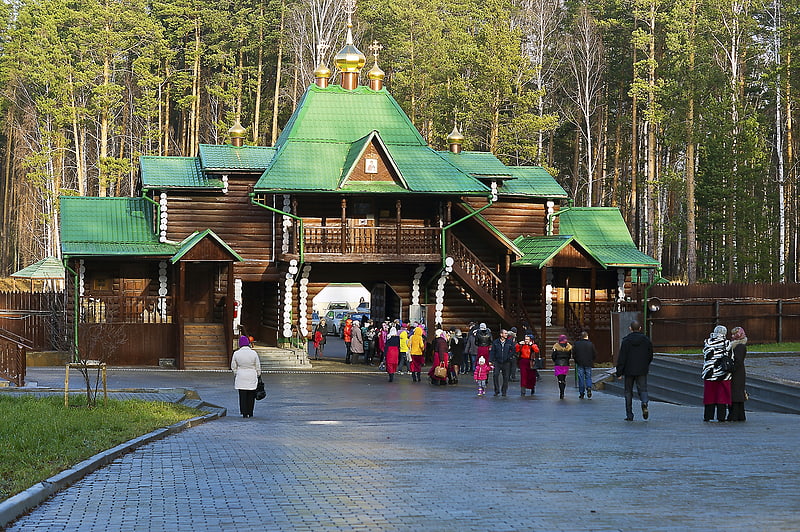
Also known as: Ганина Яма
Ganina Yama was a 9 ft deep pit in the Four Brothers mine near the village of Koptyaki, 15 km north from Yekaterinburg. In the pre-dawn hours of 17 July 1918, after the execution of the Romanov family, the bodies of Tsar Nicholas II of Russia and his family were secretly transported to Ganina Yama and thrown into the pit.
A week later, the White Army drove the Bolsheviks from the area and launched an investigation into the fate of the royal family. An extensive report concluded that the royal family's remains had been cremated at the mine, since evidence of fire was found and charred bones, but no bodies. But the Bolsheviks, realizing that the burial site was no longer a secret, had returned to the site the night after the first burial to relocate the bodies to another area. The secret Bolshevik report on the execution and burial did not give the location of the second burial site, but the description provided clues.
The second burial site, a field known as Porosyonkov Log (Поросёнков лог, "Piglet’s Ravine") four and a half miles from Ganina Yama (56.9113628°N 60.4954326°E / 56.9113628; 60.4954326), was discovered in the late 1970s through clandestine research but kept secret until the political climate changed in 1989. In 1995, the remains found at the Porosyonkov Ravine were identified as Romanovs using DNA from living relatives of Nicholas and Alexandra’s parents. The Porosyonkov Ravine burial pit is marked by a cross and simple landscaping of the burial pit. A second, smaller pit was located at the Porosenkov Ravine in 2007 containing the remains of two Romanov children missing from the larger grave. Further excavation was planned for the summer of 2009.
The Russian Orthodox Church, relying on the White Army's reports in preference to Bolshevik reports, and doubting the DNA identification, declared the Ganina Yama site holy ground. The royal family and their retinue had been canonized in 1981 by the Russian Orthodox Church Abroad. The grounds were therefore dedicated to honor the family’s humility during capture and their status as political martyrs. With financial assistance from the Ural Mining and Metallurgical Company, the Church constructed the Monastery of the Holy Imperial Passion-Bearers at the site in 2001. A tall cross marks the edge of the mine shaft, visible as a depression in the ground.
Seven chapels were later constructed at the site, one for each member of the royal family. Each chapel is dedicated to a particular saint or relic. The katholikon is dedicated to the Theotokos Derzhavnaya, an icon particularly revered by the monarchists; it burnt to the ground on 14 September 2010 but has now been fully restored. On the anniversary of the murder, a night-long service is held at the Church of All Saints (Church on the Blood) on the site of the Ipatiev House. At daybreak, a procession walks four hours to Ganina Yama for another ceremony. The former mine pit is covered with lily plants for the ceremony.[5]
Address: Ganina Yama Tract, 624090 Yekaterinburg
Trinity Cathedral
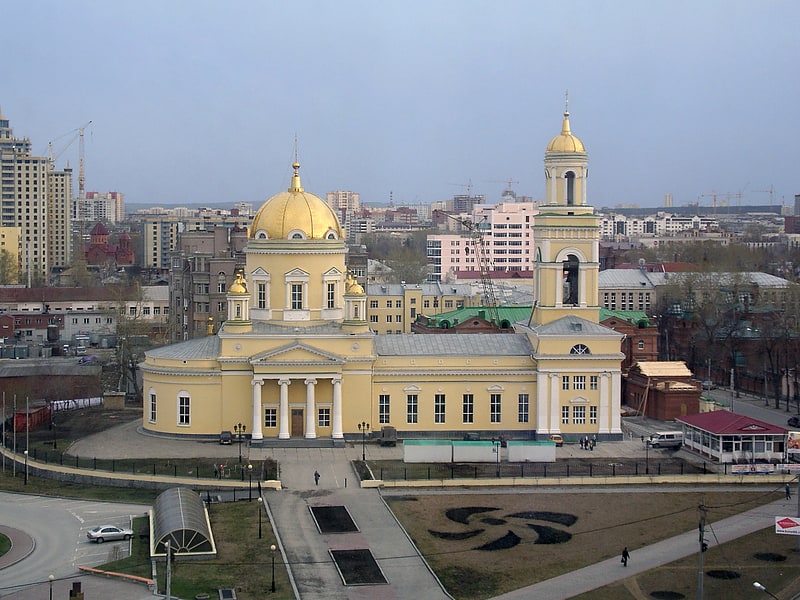
Principal church in Yekaterinburg, Russia. Holy Trinity Cathedral, sometimes shortened to Trinity Cathedral, is an Orthodox church in Yekaterinburg, Russia. Built between 1818 and 1839, the building served in several roles throughout the history of Imperial Russia, the Soviet Union, and Russian Federation. The church is currently managed by the Metropolitanate of Yekaterinburg.[6]
Address: 57 улица Розы Люксембург, Yekaterinburg
Sverdlovsk Regional Museum of Local Lore
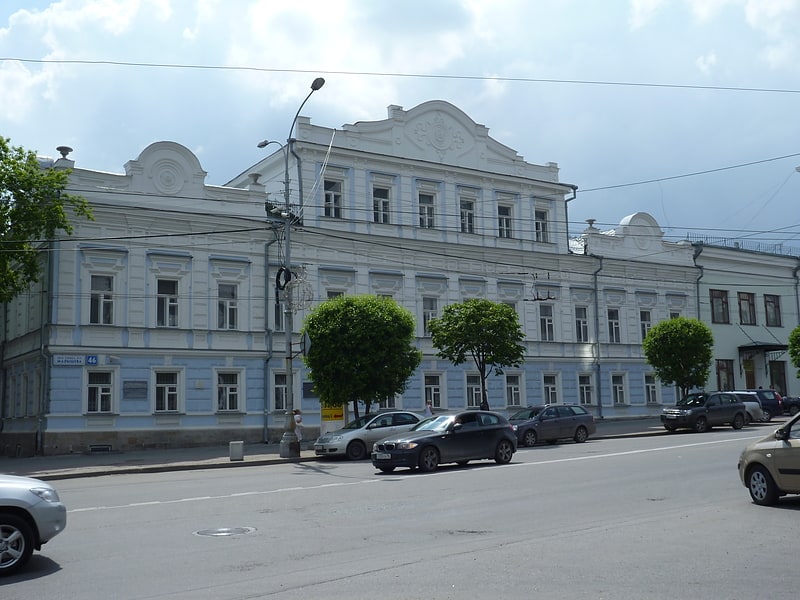
The Sverdlovsk Regional Museum of Local Lore is a museum in Yekaterinburg, Sverdlovsk Oblast, Russia. The museum is one of the oldest in Yekaterinburg, having been founded in 1870. In addition the main branch of the museum, the institution manages several other museums in the region.[7]
Address: ул. Малышева, 46, 620151 Екатеринбург
Circus
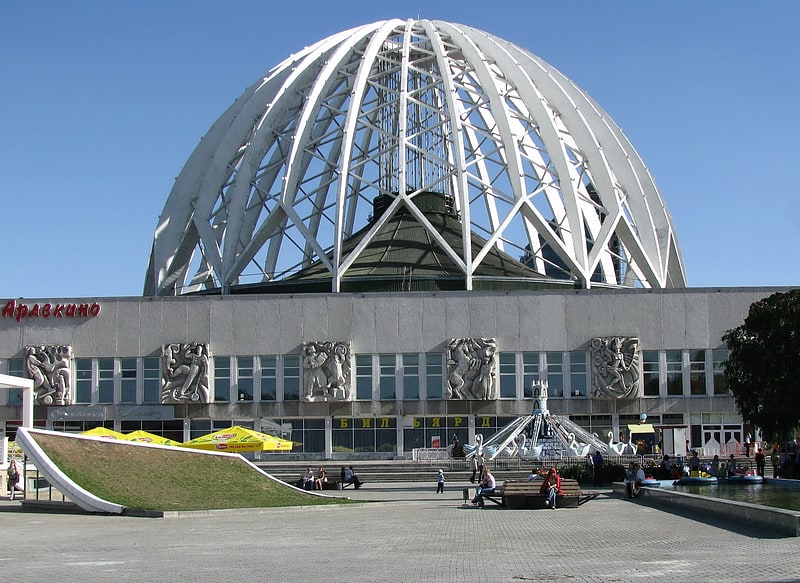
Also known as: Екатеринбургский цирк
Circus in Yekaterinburg, Russia. Yekaterinburg Circus is a circus building for 2,558 spectators in Yekaterinburg, Russia.[8]
Address: Vosmogo Marta St., 43, 620142 Yekaterinburg
Monument to Boris Yeltsin in Yekaterinburg
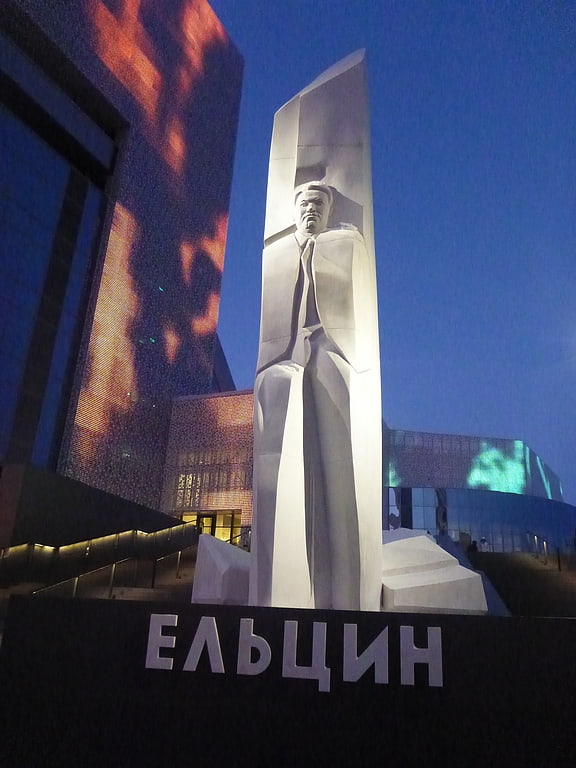
Monument in Yekaterinburg, Russia. The Monument to Boris Yeltsin in Yekaterinburg is a monument to Boris Yeltsin, the first President of Russia, Soviet party, Russian political and state leader, one of the founders of postsoviet Russia, in Yekaterinburg, the oblast center of his native region where he lived and worked for a long time. The monument is located near Boris Yeltsin Presidential Center. The monument is regularly subject to vandalism.[9]
Merchant Pshenichnikov's house
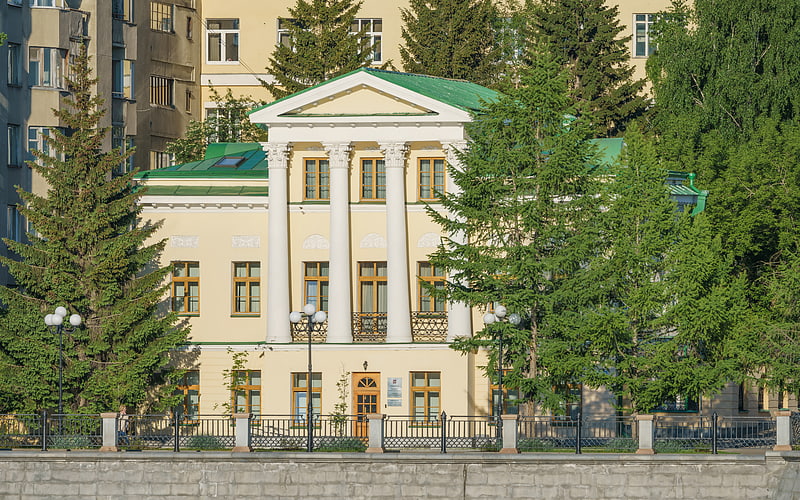
Merchant Pshenichnikov's House is located in the historical center of Yekaterinburg, Sverdlovsk Oblast in Russia.
The building was granted the status of federal significance on August 30, 1960 (Council of Ministers of the RSFSR Decree № 1327). Its cultural heritage of regional significance object number is 661710759180005.[10]
Great Zlatoust Church
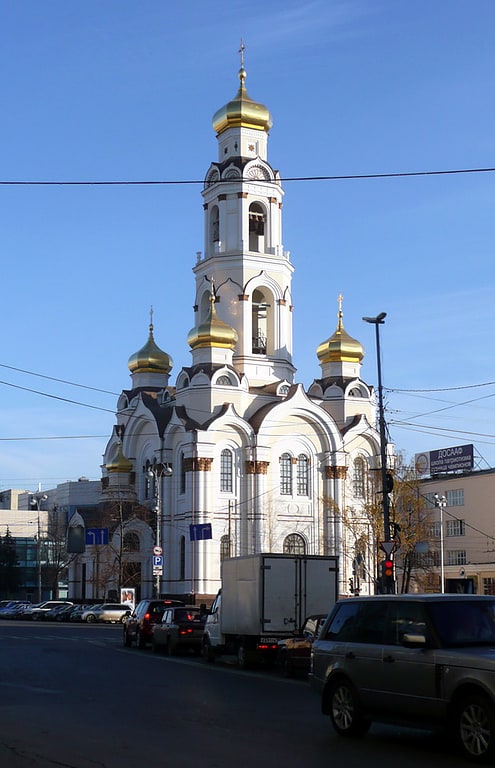
Also known as: Большой Златоуст
Building. The Bolshoi Zlatoust is a 77-metre -high bell tower that used to dominate the skyline of Yekaterinburg before the Russian Revolution. It was the tallest building in the Urals region. It was destroyed in 1930 and rebuilt 80 years later.
The name translates as "Great (or Big) Chrysostom", a reference to the Orthodox church in the name of St. John Chrysostom, who was (and is), along with St. Basil the Great and St. Gregory of Nazianzus, one of the most honoured Holy Fathers in Russia. This church occupied the place during the early 19th century. The bell tower was designed in 1847 by Vasily Morgan in a Russo-Byzantine style derived from Konstantin Thon's works. It required almost 30 years to build. The church in the ground floor was dedicated to St. Maximian, one of the Seven Sleepers and the patron saint of the Czar's son-in-law, Maximilian de Beauharnais, 3rd Duke of Leuchtenberg.
After the Russian Revolution the church of St. Maximian was closed for worship and eventually dismantled (in 1930) to make way for a statue of Lenin and Stalin. The church was rebuilt in the early 21st century. The builders relied on old photographs and descriptions.[11]
Keyboard monument
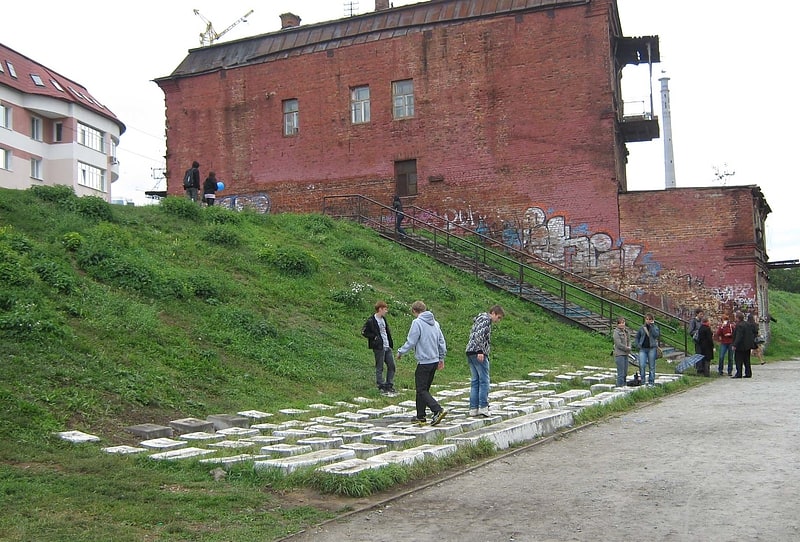
Also known as: Памятник клавиатуре
Tourist attraction in Yekaterinburg, Russia. Keyboard Monument is an outdoor sculpture featuring the QWERTY/ЙЦУКЕН keyboard. It is located in the Russian city of Yekaterinburg and is popular among tourists.[12]
Address: ул. Максима Горького, 620075 Екатеринбург
St. Anne's Church
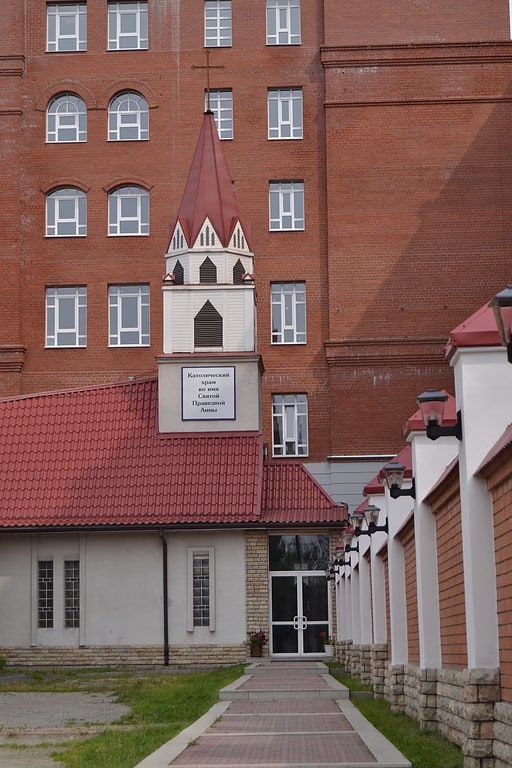
Also known as: Храм Святой Анны
Church. The St. Anne's Church It is a Catholic church located in Yekaterinburg, in the Diocese of Novosibirsk in Russia, suffragan of the Archdiocese of the Mother of God in Moscow. This church belongs to the group of parishes of the deanery of the Urals. The parish is run by the Sisters of the Congregation of Missionary Sisters of the Catholic Apostolate, founded by St. Vincent Pallotti.[13]
Address: Gogolya st., 9, 620075 Yekaterinburg
Gorodskoy Prud
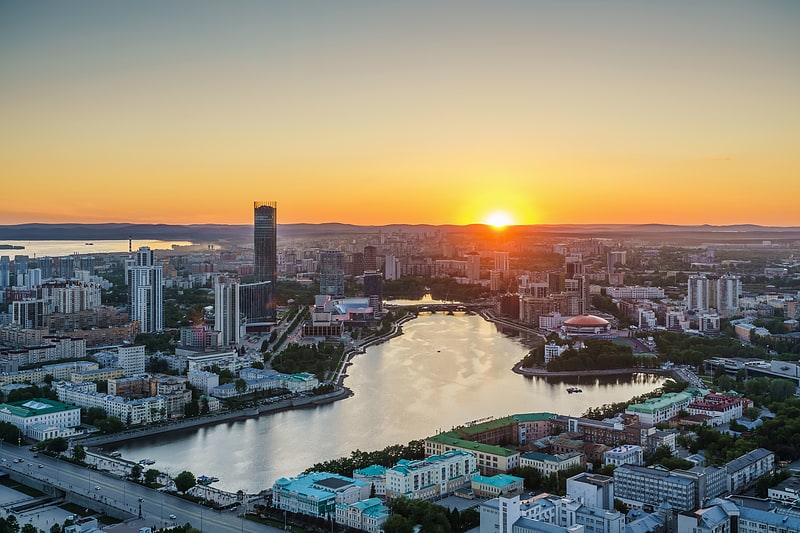
City Pond is a pond on the Iset River. It is located in the center of Yekaterinburg. It was formed in 1723.
Kirov Square
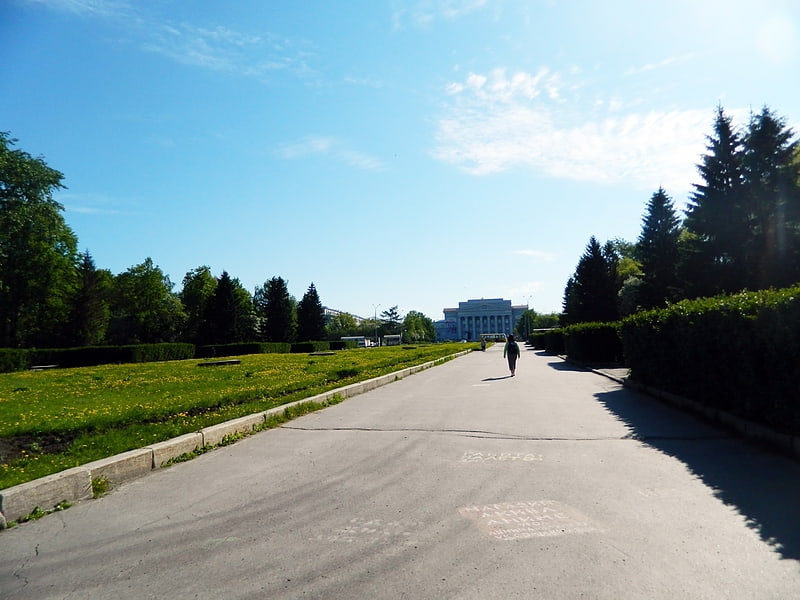
Also known as: Площадь Кирова
Kirov Square is a square in Yekaterinburg, Russia at the eastern end of Prospekt Lenina.
The square is named after Sergey Kirov. He was a Bolshevik revolutionary and Soviet communist.[14]
Yekaterinburg Gallery of Modern Art
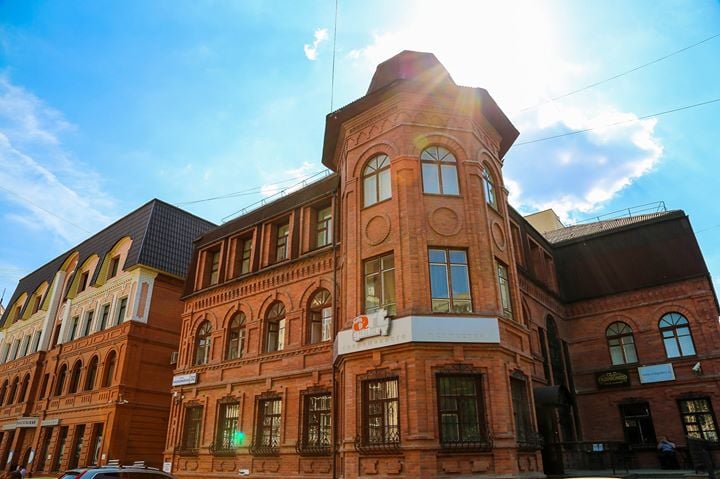
Museum, Art gallery, Art museum
Address: Красноармейская ул., 32, 620075 Екатеринбург
Vysotsky

Also known as: Высоцкий
Skyscraper in Yekaterinburg, Russia. Vysotsky is the name of a skyscraper in Yekaterinburg. It is the third-tallest building in Russia outside of Moscow.[15]
Hudozestvennyj Muzej Ernsta Neizvestnogo
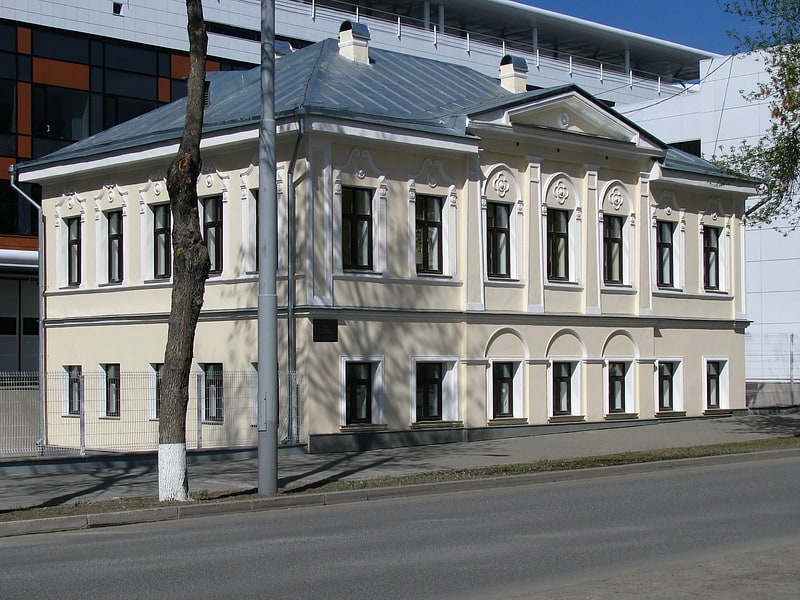
The Ernst Neizvestny Art Museum is a state museum in Yekaterinburg dedicated to the work of sculptor and artist Ernst Neizvestny, a native of the city. It is Neizvestny's first museum in Russia and was opened on his 88th birthday, April 9, 2013, at the initiative of a number of public figures in Ekaterinburg and with the support of the governor of the Sverdlovsk region.
The museum is located in the center of Yekaterinburg, in an old building of the middle of the XIX century (former home of U.O. Petelina, is a cultural heritage site). The stone house stands on the red line of Dobrolyubova Street (former Gospitalnaya Street), just opposite the residence of the Representative of the President of the Russian Federation in the Ural Federal District.
Ernst Neizvestny Museum is based on paintings (easel paintings) and graphic works (drawings, easel prints, book illustrations), small sculptures, jewelry, illustrated books and exclusive photographs, electronic archives and personal belongings of the artist. The basis of the collection consists of author originals, including those specially donated to the museum, as well as official prints and materials from the personal archive of the artist, photographs and electronic archives on the Internet.
Address: 14 улица Добролюбова, Yekaterinburg
Ural State University
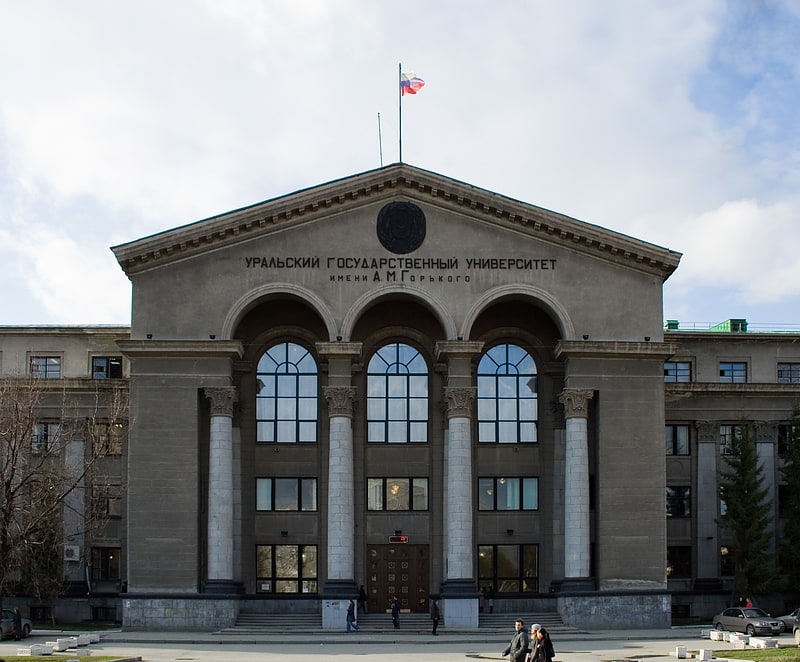
Also known as: Уральский государственный университет
Public university in Yekaterinburg, Russia. The Ural State University is a public university located in the city of Yekaterinburg, Sverdlovsk Oblast, Russian Federation. Founded in 1920, it was an exclusive educational establishment made of several institutes which later became independent universities and schools.
Established in 1936 the University was named after one of its founders, Russian author Maxim Gorky. It is the second oldest University in the Middle Urals (the oldest being Urals State University of Mines) and one of the most prestigious universities in Russia; preparing research, educational and managerial elite on the basis of the integration of academic process and scientific research. It offers education in dozens of scientific and educational fields including 53 graduate programs. In 2007 Dmitriy Bugrov was elected new rector, while the incumbent Vladimir Tretyakov took the office of the President, representing the University in international affairs.
The USU is organized into 95 chairs and 14 departments. These are Biology, Journalism, Culturology & Arts, History, Mathematics and Mechanics, Politology and Sociology, Psychology, Physics, Philology, Philosophy, Public relations, Chemistry, Foreign affairs, and Economics. Among the University's faculty there are 18 academicians of the Russian Academy of Sciences.
The University also has a Lyceum, the Leonardo Italian College, an Institute of Physics and Applied Mathematics, an Interregional Institute of Social Sciences, the Russian-American Institute of Economy and Business, the Institute of Management and Entrepreneurship, a distance education center, the Russian Culture Institute, an observatory, a botanical garden, a scientific library with over 1,200,000 volumes, a publishing house, several museums, a special chair of Russian as foreign language, a laboratory for e-learning of foreign languages, and offers refresher courses and Institutes for Further Education and Training.
Every year the Ural State University hosts the Demidov Lectures - a series of lectures given by the Demidov Prize winners.
Since 2010, the University has been The Ural Federal university after Boris Yeltsin. It was caused by the Russian Federation's President's decree #1172 from 21.10.2010. The University is now joint with The Ural State Technical University.[16]
Ural State Technical University
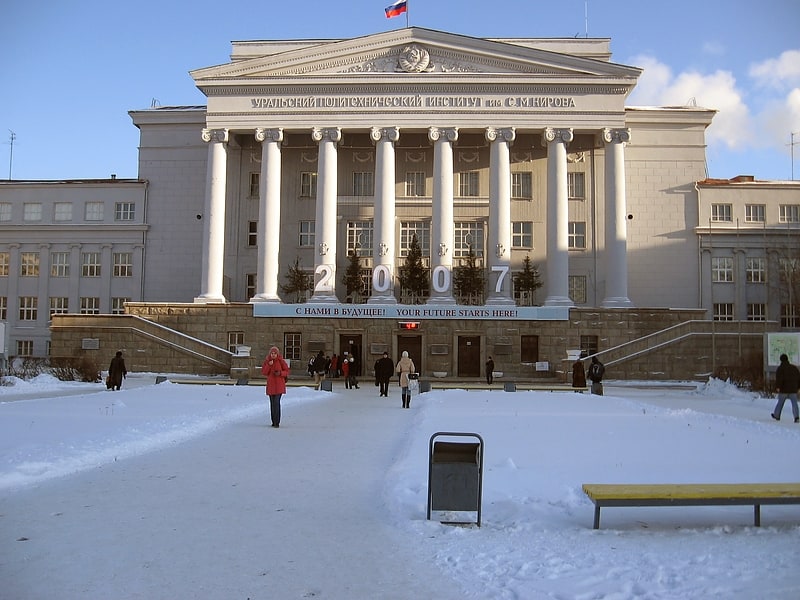
Also known as: Уральский государственный технический университет
Public university in Yekaterinburg, Russia. Ural State Technical University is a public technical university in Yekaterinburg, Sverdlovsk Oblast, Russian Federation. It is the biggest technical institution of higher education in Russia, with close ties to local industry in the Urals. Its motto, Ingenium Creatio Labor, means "brilliance, creation, work".[17]